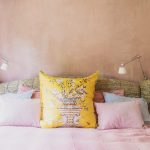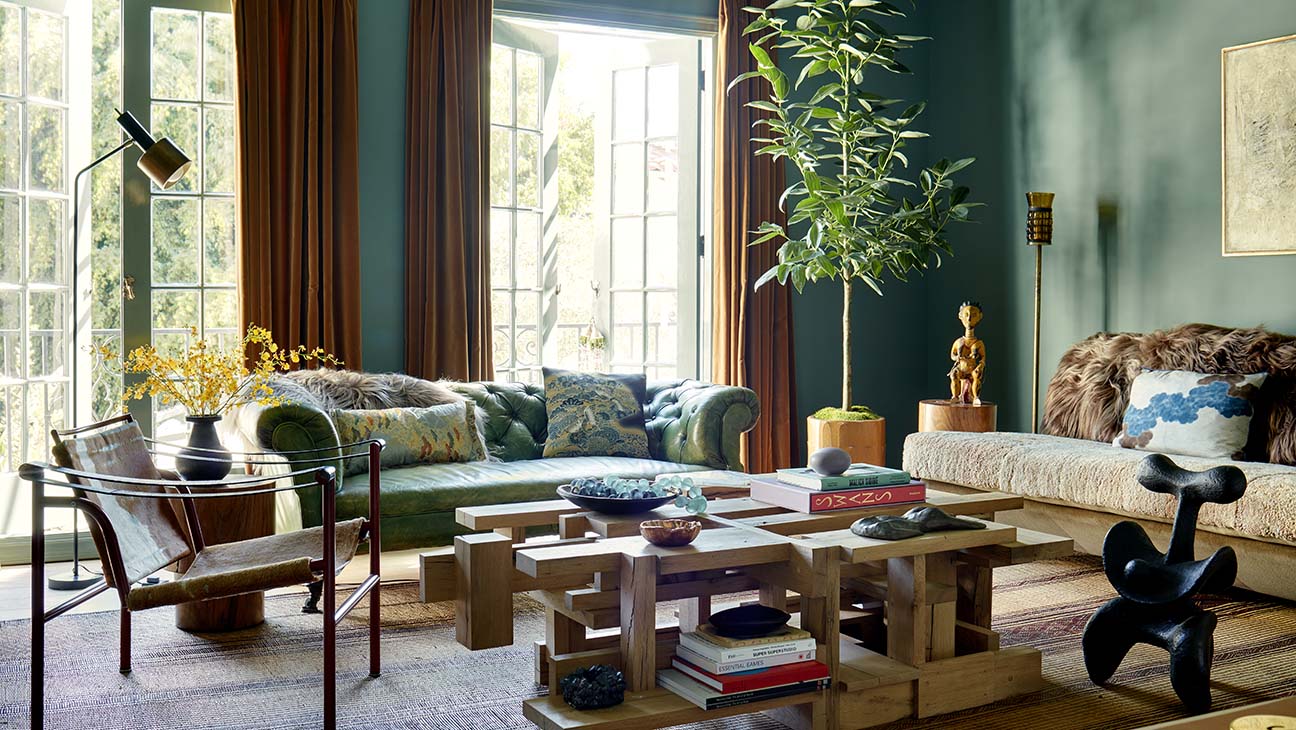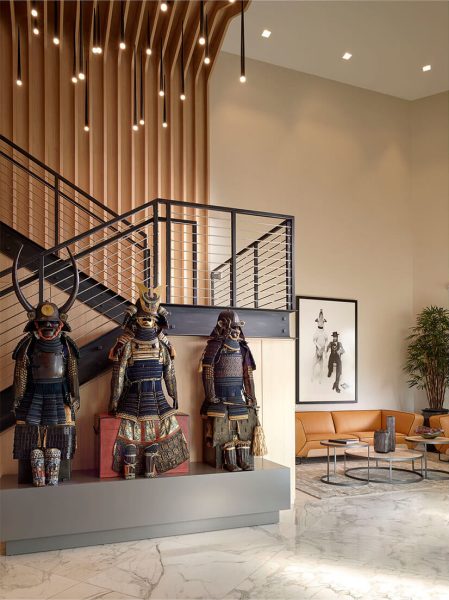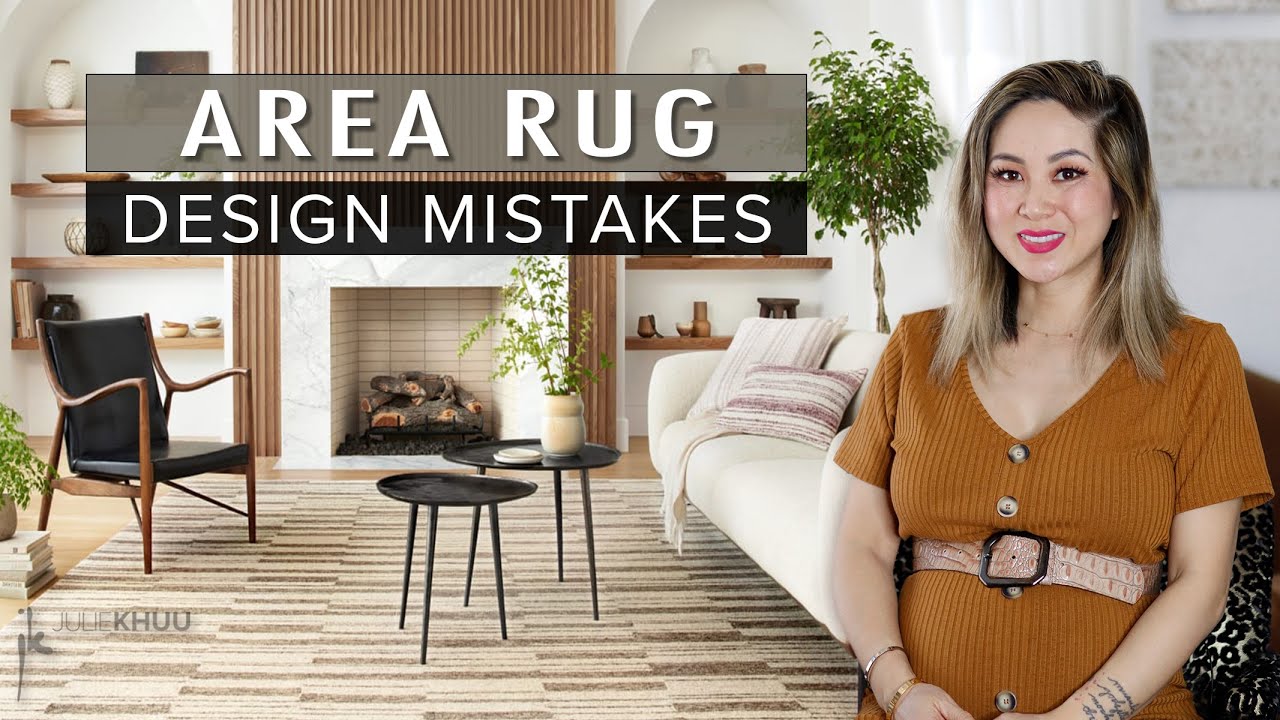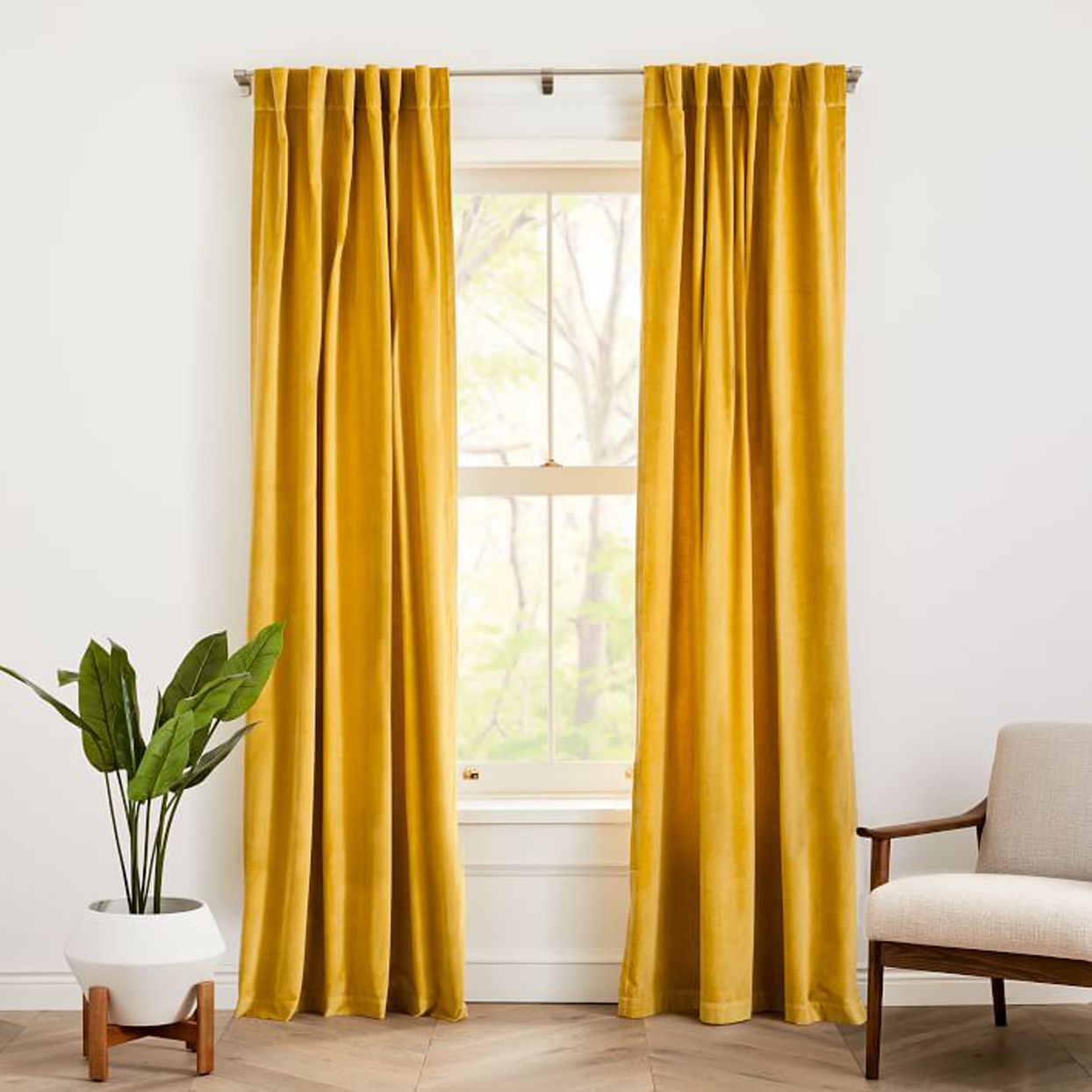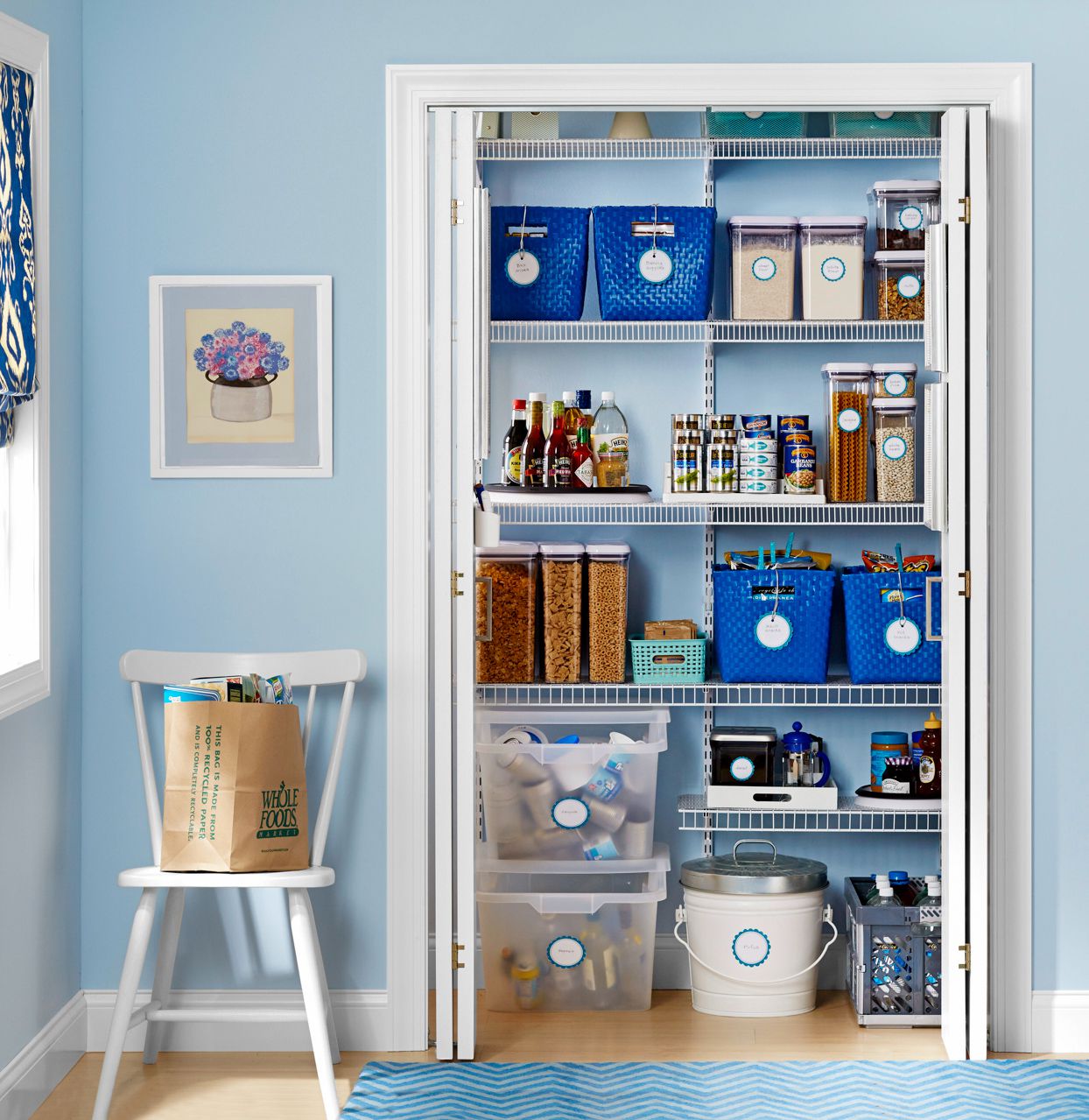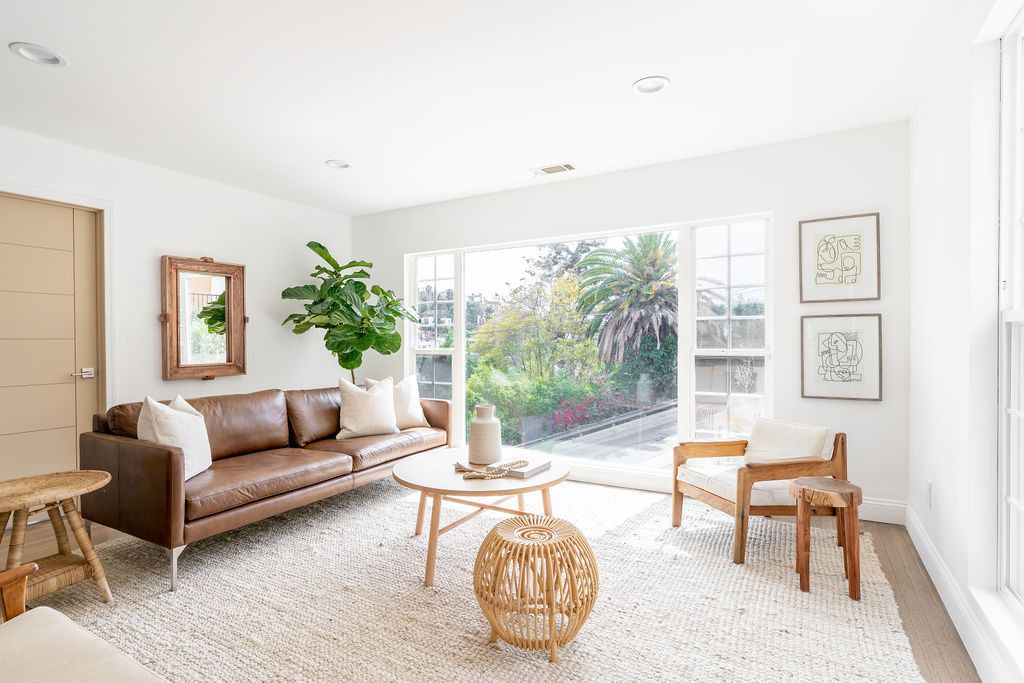
Minimalist home style emphasizes simplicity and functionality. It uses clean lines, neutral colors, and minimal decor.
Minimalist home style is gaining popularity for its clean and uncluttered look. It focuses on creating a serene and functional space by using neutral colors, simple furniture, and minimal decorations. This style reduces stress by eliminating excess and promoting a sense of calm.
Natural light plays a crucial role, enhancing the open and airy feel. Each piece in a minimalist home serves a purpose, contributing to both aesthetic and utility. The goal is to create a harmonious living environment that feels both spacious and cozy. Embracing this style can lead to a more organized and peaceful lifestyle.
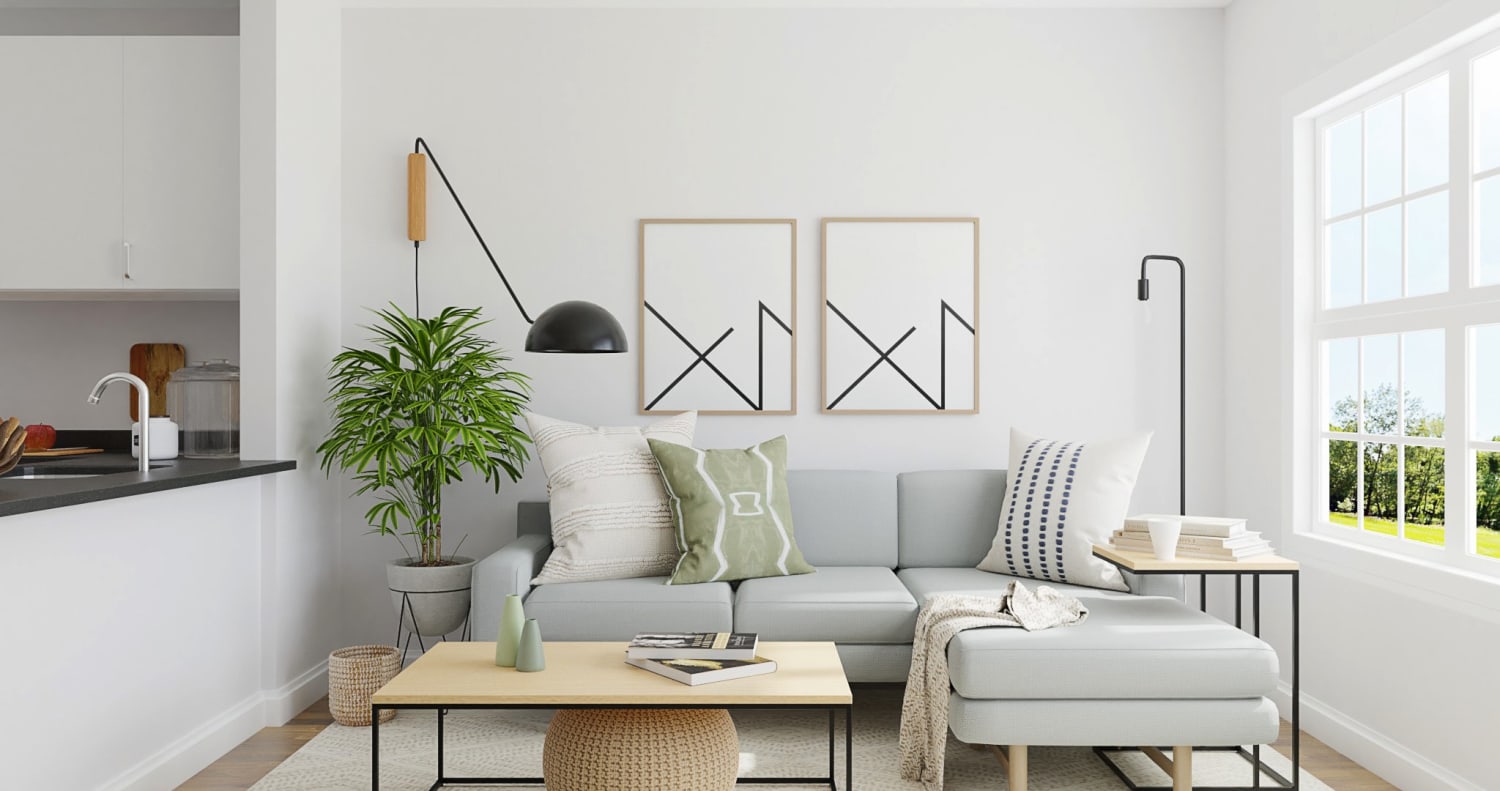
Credit: www.spacejoy.com
Introduction To Minimalism
Minimalism is more than just a home style. It is a lifestyle choice that simplifies life. Embracing minimalism can make your home feel calm and clutter-free.
What Is Minimalism?
Minimalism focuses on keeping only the essentials. This means removing unnecessary items. It aims to create a clean, simple space. The key elements include:
- Simplicity: Clean lines and minimal decor.
- Functionality: Every item has a purpose.
- Quality: Fewer, better-quality items.
Benefits Of A Minimalist Home
A minimalist home offers many benefits. Here are some key advantages:
| Benefit | Description |
|---|---|
| Less Clutter | A minimalist home reduces clutter. This makes cleaning easier. |
| More Space | Fewer items create more open space. This makes rooms feel larger. |
| Calm Environment | A simple, tidy home promotes peace and reduces stress. |
| Focus on Essentials | You only keep what you need. This helps you value what you have. |

Credit: www.mansionglobal.com
Getting Started
Embarking on a minimalist home style journey can be refreshing. Simplifying your home can lead to a more peaceful environment. This guide will help you get started with ease.
Assessing Your Space
Start by taking a good look at each room. Notice areas that feel cluttered or chaotic. Use a notebook to jot down these observations.
Creating a checklist can be very helpful. Here is a simple example:
- Living Room: Clear off coffee table, declutter bookshelves
- Kitchen: Organize pantry, donate unused appliances
- Bedroom: Simplify wardrobe, clear bedside tables
Setting Goals
Define what you want to achieve with your minimalist home. Setting clear goals can keep you motivated.
Consider these questions to help set your goals:
- Why do you want to simplify your home?
- What areas need the most attention?
- How will a minimalist style improve your life?
Here is a goal-setting table to organize your thoughts:
| Goal | Action Steps | Deadline |
|---|---|---|
| Declutter the living room | Remove old magazines, donate extra decor | 2 weeks |
| Organize the kitchen | Sort pantry, clear countertops | 1 month |
Start small and stay focused. Celebrate your progress along the way!
Decluttering Tips
Creating a minimalist home starts with decluttering. A clutter-free space brings peace. Here are some practical tips. They will help you remove unnecessary items and organize your home.
Room-by-room Guide
Each room needs a different approach. Follow this guide to make it easier:
| Room | Key Actions |
|---|---|
| Living Room | Remove unnecessary furniture and decor. |
| Kitchen | Clear out expired food and extra utensils. |
| Bedroom | Keep only essential furniture and clothing. |
| Bathroom | Discard old toiletries and empty bottles. |
Decluttering Techniques
Use these techniques to make decluttering effective and easy:
- Set Goals: Decide what you want to achieve. This keeps you focused.
- Sort Items: Use three boxes: Keep, Donate, and Trash.
- Start Small: Begin with a drawer or a shelf.
- One In, One Out: For every new item, remove an old one.
- Daily Routine: Spend 15 minutes each day decluttering.
Choosing Furniture
Choosing furniture for a minimalist home is a crucial task. The right pieces can enhance the simplicity and elegance of your space. Focus on essential items and quality to maintain the minimalist vibe.
Essential Pieces
In a minimalist home, every piece of furniture should serve a purpose. Stick to the essentials like a comfortable sofa, a functional table, and a cozy bed. Avoid clutter by limiting the number of items in each room.
- Sofa: Choose a simple, comfortable design.
- Table: Opt for a functional, multi-use table.
- Bed: Select a cozy, minimalist bed frame.
Quality Over Quantity
Invest in high-quality furniture pieces that will last. This ensures durability and reduces the need for replacements. Quality pieces often have better design and craftsmanship. They fit better in a minimalist home.
Consider materials like solid wood, stainless steel, and genuine leather. These materials offer longevity and a sleek, clean look.
| Material | Benefits |
|---|---|
| Solid Wood | Durable, classic, and timeless. |
| Stainless Steel | Strong, modern, and easy to maintain. |
| Genuine Leather | Elegant, long-lasting, and comfortable. |
Choosing quality over quantity helps maintain a minimalist aesthetic. It also contributes to a more sustainable lifestyle.
Color Palette
The color palette is crucial in achieving a minimalist home style. Choosing the right colors can make your space feel serene and uncluttered. Here, we discuss the key elements of a minimalist color palette.
Neutral Tones
Neutral tones form the foundation of minimalist design. These colors are often muted and subtle. They create a calming atmosphere and make your space feel open.
- White – Clean and crisp, white reflects light and enlarges spaces.
- Beige – Soft and warm, beige adds a cozy feel.
- Gray – Versatile and modern, gray suits any room.
Neutral tones are easy to pair with other colors. They serve as a blank canvas for your decor.
Accent Colors
Accent colors add depth and interest to a minimalist home. They should be used sparingly to avoid cluttering the space.
- Soft Pastels – Light blues, pinks, and greens can add a gentle touch.
- Earthy Hues – Browns and greens bring a natural feel.
- Muted Shades – Dusty rose, olive, and navy add sophistication.
Use accent colors in small doses. Think throw pillows, artwork, or a single piece of furniture.
Below is a table summarizing some popular neutral and accent colors:
| Neutral Tones | Accent Colors |
|---|---|
| White | Light Blue |
| Beige | Dusty Rose |
| Gray | Olive |
| Soft Cream | Navy |
Choosing the right color palette is essential. It sets the tone for your minimalist home style. Stick to neutrals and add accents wisely. Your space will feel balanced and harmonious.
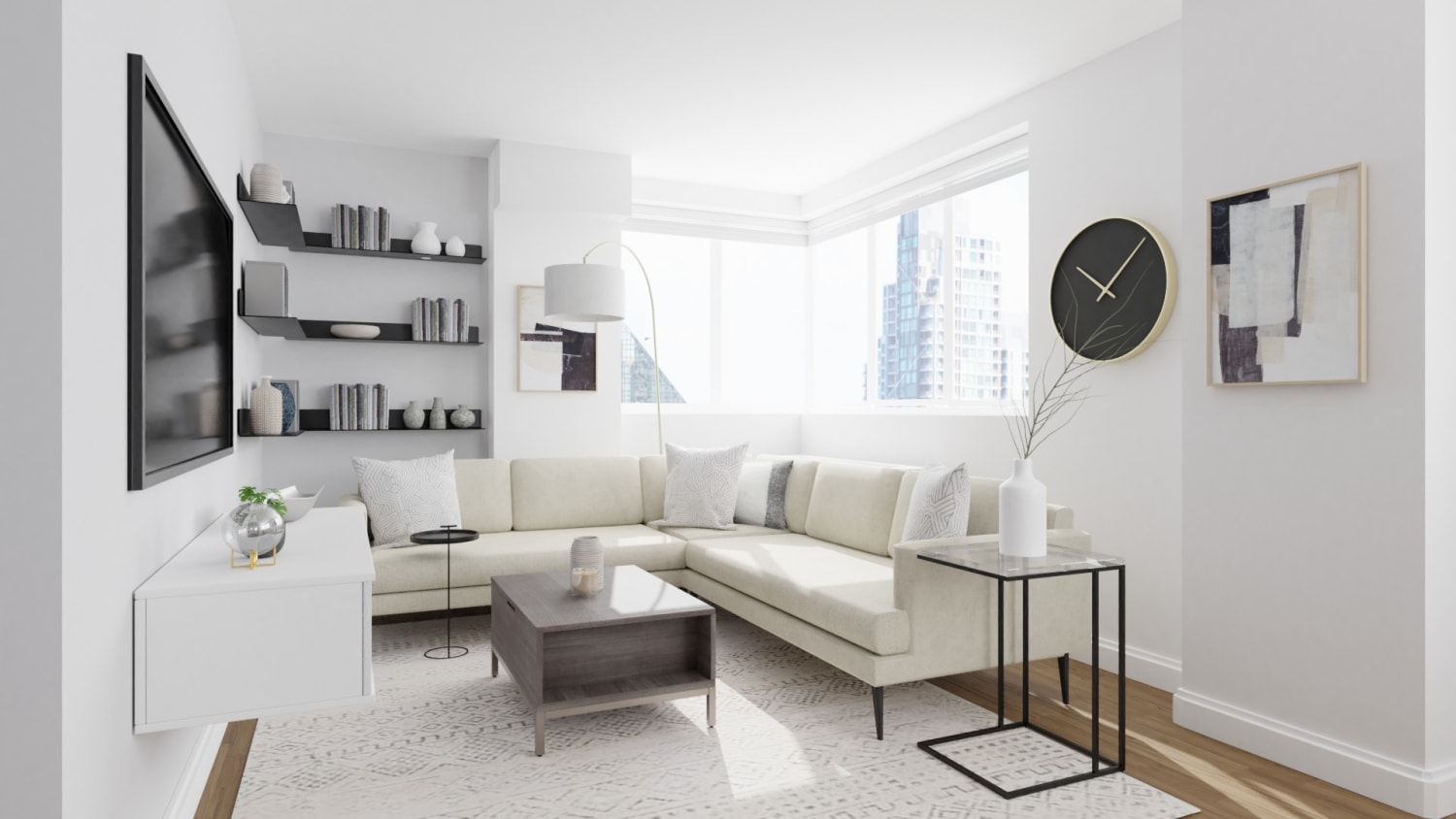
Credit: www.spacejoy.com
Storage Solutions
Minimalist home style embraces simplicity and functionality. Storage solutions play a crucial role in maintaining this aesthetic. Efficient storage helps keep spaces clutter-free and organized. Here, we explore some effective storage solutions.
Built-in Storage
Built-in storage is a perfect fit for minimalist homes. It maximizes space and keeps items hidden. This type of storage often blends seamlessly with the room’s design.
- Custom cabinets: These can be tailored to fit any room.
- Shelving units: Built directly into walls, saving floor space.
- Under-stair storage: Ideal for making use of every inch.
Built-in storage reduces visual clutter. It ensures everything has a designated spot. This keeps the home neat and tidy.
Multi-functional Furniture
Multi-functional furniture serves more than one purpose. It is essential for small spaces and minimalist homes.
| Furniture | Functions |
|---|---|
| Sofa beds | Seating by day, bed by night. |
| Ottomans with storage | Seating and hidden storage in one. |
| Extendable tables | Compact daily use, expands for guests. |
Multi-functional furniture helps maintain a minimalist look. It reduces the need for extra pieces. This keeps the home spacious and uncluttered.
Decorating With Purpose
Decorating with purpose means every item has a function. This approach helps create a serene and clutter-free home. It emphasizes quality over quantity. The goal is to make each piece count.
Selecting Art
Choosing art for a minimalist home involves careful consideration. Opt for pieces that speak to you. Large, bold pieces can serve as focal points. Stick to a neutral color palette to maintain harmony.
Consider the following tips:
- Select simple frames that match your decor.
- Limit the number of pieces to avoid clutter.
- Choose art with clean lines and simple designs.
Minimalist Accessories
Accessories in a minimalist home should be few but meaningful. Each item should add value to the space. Think about how each piece complements the overall aesthetic.
Some examples include:
- Simple vases with single stems.
- Functional storage like stylish baskets.
- Neutral-colored rugs with subtle patterns.
Follow these guidelines for a cohesive look:
| Guideline | Details |
|---|---|
| Limit colors | Stick to a neutral palette. |
| Choose quality | Invest in durable, timeless pieces. |
| Functionality first | Ensure each item serves a purpose. |
Lighting Essentials
Lighting is vital in a minimalist home. It enhances the clean, open feel. Proper lighting can transform a space, making it cozy and inviting. Let’s explore the key elements of minimalist lighting.
Natural Light
Natural light is a staple in minimalist homes. Large windows are essential. They allow sunlight to flood the space. Use sheer curtains to soften the light. This keeps the room bright but not harsh.
- Skylights: These add light from above.
- Glass doors: They let more light in.
Mirrors can reflect natural light. Place them strategically. This creates an illusion of more space.
Artificial Lighting
Artificial lighting complements natural light. Choose fixtures with clean lines. Avoid ornate designs. LED lights are energy-efficient and last longer.
| Type | Feature |
|---|---|
| Recessed Lighting | Hidden and sleek |
| Floor Lamps | Provide ambient light |
| Task Lighting | For focused areas |
Use dimmers to control brightness. This allows flexibility. You can adjust the light to suit the mood.
- Choose neutral-colored lampshades.
- Avoid cluttering light fixtures.
- Ensure even light distribution.
Combining natural and artificial light creates balance. It ensures your minimalist home feels open and warm.
Textiles And Materials
Textiles and materials play a crucial role in minimalist home style. They add warmth, texture, and a sense of comfort. Selecting the right fabrics and natural materials can transform a simple space into a serene retreat.
Choosing Fabrics
Choosing the right fabrics is essential for a minimalist home. Opt for neutral colors like white, beige, and gray. These colors create a calming atmosphere.
Cotton and linen are excellent choices. They are breathable and easy to maintain. Wool adds warmth, making it perfect for colder seasons.
| Fabric | Properties |
|---|---|
| Cotton | Breathable, easy to clean |
| Linen | Lightweight, durable |
| Wool | Warm, cozy |
Natural Materials
Using natural materials enhances the minimalist aesthetic. Wood, stone, and bamboo are excellent choices. They bring a sense of nature indoors.
Wood can be used for furniture and flooring. It adds warmth and texture. Stone is ideal for countertops and accent walls. It creates a modern look.
- Wood: Warm, natural look
- Stone: Modern, durable
- Bamboo: Eco-friendly, versatile
Creating Open Spaces
Creating open spaces is the heart of a minimalist home style. Open spaces bring a sense of calm and order. They make rooms feel larger and airier. Achieving open spaces involves thoughtful design and planning.
Furniture Arrangement
Furniture arrangement plays a key role in creating open spaces. Choose furniture that fits the room size. Avoid oversized pieces that make spaces feel cramped. Opt for multi-functional furniture. This reduces clutter and saves space.
Keep a balance between furniture and empty areas. Leave enough walking space between pieces. Place larger items against walls. This opens up the central area of the room.
| Do’s | Don’ts |
|---|---|
| Use multi-functional furniture | Avoid oversized furniture |
| Keep pathways clear | Don’t overcrowd the room |
| Balance furniture and empty spaces | Avoid blocking windows |
Visual Flow
Visual flow ensures the eye moves smoothly across the room. It makes spaces feel connected and harmonious. Use a consistent color palette throughout the room. This creates a unified look.
Avoid placing too many items in one area. Spread decor evenly around the room. Use mirrors to reflect light and create depth. This trick expands visual space.
Maintain a clean and tidy look. Clutter disrupts visual flow and makes spaces feel smaller. Keep surfaces clear and organized.
- Use a consistent color palette
- Spread decor evenly
- Use mirrors to reflect light
- Keep surfaces clear
Maintaining Minimalism
Maintaining Minimalism in your home can be a rewarding experience. It requires regular effort and commitment. You need to adopt certain habits and practices. These habits will help keep your space clutter-free and serene.
Daily Habits
Daily habits are crucial for a minimalist lifestyle. A few simple actions each day can make a big difference.
- Tidy up: Spend 10 minutes each day tidying up.
- Use the one-in, one-out rule: For every new item you bring in, remove one.
- Clear surfaces: Keep countertops and tables free from clutter.
These small actions help maintain a minimalist environment. They prevent clutter from building up.
Seasonal Cleanouts
Seasonal cleanouts are another effective strategy. They help you manage your belongings throughout the year.
| Season | Activities |
|---|---|
| Spring | Donate unused clothes, organize the garage. |
| Summer | Sort through kids’ toys, clean outdoor spaces. |
| Fall | Check pantry items, store seasonal decor. |
| Winter | Review books and media, tidy up closets. |
Each season, focus on different areas. This helps keep your home organized all year round.
Minimalist Kitchens
Minimalist kitchens focus on simplicity and functionality. They combine sleek designs with practical elements. This style creates a calming, efficient cooking space. Below are key aspects to achieve a minimalist kitchen.
Streamlined Appliances
Choose appliances with a simple design and clean lines. Stainless steel and neutral colors work best. Hidden or integrated appliances save space and reduce clutter.
- Built-in ovens and microwaves
- Under-counter refrigerators
- Induction cooktops
Smart appliances enhance efficiency and maintain the minimalist look. Opt for devices that offer multiple functions. This reduces the need for extra gadgets.
| Appliance | Features |
|---|---|
| Induction Cooktop | Fast heating, easy to clean, energy-efficient |
| Built-in Oven | Convection cooking, self-cleaning, space-saving |
| Smart Refrigerator | WiFi-enabled, touch screen, energy-efficient |
Organized Pantries
An organized pantry is essential for a minimalist kitchen. Use clear containers to store dry goods. Label each container for easy identification.
- Group similar items together
- Use stackable containers
- Regularly declutter and clean the pantry
Install shelves and pull-out drawers for better access. Keep frequently used items at eye level. This makes cooking more efficient and enjoyable.
Consider using a minimalist color palette in your pantry. White, grey, or beige tones work well. This adds to the overall serene aesthetic of your kitchen.
Minimalist Bedrooms
Minimalist bedrooms offer a serene and peaceful environment. They focus on simplicity and functionality. The goal is to create a clutter-free and relaxing space.
Simplified Bedding
Choose bedding with clean lines and neutral colors. A simple white duvet cover can create a calm atmosphere. Use minimalistic pillows and avoid excessive patterns. Keep the bed frame sleek and low-profile.
- Neutral colors
- Clean lines
- Minimalistic pillows
Opt for high-quality, natural fabrics. These materials add comfort and durability. Linen and cotton are excellent choices for a minimalist bedroom.
Clutter-free Closets
Organize your closet to maintain a clutter-free space. Use storage solutions like baskets and bins. Keep only essential items in your wardrobe. Donate or sell clothes you no longer wear.
- Use storage solutions
- Keep essential items
- Donate or sell unused clothes
A well-organized closet enhances the minimalist feel. It ensures easy access to your belongings. The goal is to create a clean and efficient space.
| Element | Minimalist Tip |
|---|---|
| Bedding | Neutral colors, simple designs |
| Closet | Organized, essential items only |
Minimalist Bathrooms
Minimalist bathrooms are a haven of simplicity and serenity. They focus on clear spaces, functional design, and a calming atmosphere. By removing clutter and unnecessary items, these bathrooms create a peaceful retreat within your home. Let’s dive into the essentials of creating a minimalist bathroom.
Essential Toiletries
Minimalist bathrooms prioritize essential toiletries only. This helps maintain a clean and uncluttered look. Here is a list of must-have items:
- Soap – A simple bar or liquid soap.
- Shampoo and Conditioner – Basic hair care products.
- Toothbrush and Toothpaste – Essential for dental hygiene.
- Towel – One for body, one for face.
- Razor – For shaving needs.
Keep these items in a designated space to avoid clutter. Use containers or trays to organize them neatly.
Towel Storage
Effective towel storage is crucial in a minimalist bathroom. Here are some smart ideas:
- Wall-mounted racks – Save floor space and keep towels handy.
- Under-sink cabinets – Store extra towels out of sight.
- Hooks – Install behind doors or on walls.
- Baskets – Use stylish baskets for a neat look.
Choose storage solutions that match your bathroom’s decor. This ensures a cohesive and tidy space.
| Storage Option | Benefits |
|---|---|
| Wall-mounted racks | Saves space, easy access |
| Under-sink cabinets | Hides clutter, extra storage |
| Hooks | Simple, versatile |
| Baskets | Stylish, portable |
By focusing on essential toiletries and smart towel storage, you can achieve a minimalist bathroom that feels calm and organized.
Minimalist Living Rooms
Minimalist living rooms focus on simplicity and functionality. This style uses clean lines, neutral colors, and uncluttered spaces. The goal is to create a calm and serene environment.
Comfortable Seating
Comfortable seating is key in a minimalist living room. Choose sofas and chairs with simple designs and neutral colors. Neutral tones like white, beige, or gray are best. These colors create a peaceful atmosphere.
Avoid overly large furniture. Instead, opt for sleek and modern pieces. Sectional sofas can work well for larger spaces. For smaller rooms, a loveseat or a couple of armchairs will suffice.
Arrange the seating to encourage conversation. A coffee table in the center can tie the room together. Use a simple design for the table, with clean lines and minimal decoration.
Functional Decor
Functional decor means each item has a purpose. Avoid clutter and unnecessary items. Wall art should be simple and minimal. A single large piece or a small group of photos can add interest without overwhelming the space.
Use shelves to display a few meaningful items. Keep the rest of the shelves empty to maintain a clean look. Plants can add a touch of nature and freshness. Choose plants with simple leaves and easy care requirements.
Lighting is also important. Use floor lamps and table lamps with simple designs. Ensure the light is soft and warm to create a cozy atmosphere.
| Element | Recommendation |
|---|---|
| Sofa | Neutral tones, simple design |
| Wall Art | Minimal and meaningful |
| Plants | Simple, easy care |
| Lighting | Soft, warm light |
Keep these tips in mind for a minimalist living room. Simplicity and functionality are the keys to success.
Minimalist Offices
Minimalist offices focus on simplicity and functionality. They create a clean, stress-free work environment. This style increases productivity and reduces distractions. Let’s explore how to achieve this through efficient workspaces and paperless solutions.
Efficient Workspaces
Creating an efficient workspace is essential for a minimalist office. Use the following tips:
- Choose a simple desk with clean lines.
- Opt for ergonomic chairs to support your back.
- Keep only necessary items on your desk.
Consider using storage solutions such as:
- Floating shelves
- Drawer organizers
- Minimalist filing cabinets
These help keep your workspace tidy and clutter-free.
Paperless Solutions
Going paperless is a key part of a minimalist office. It reduces clutter and increases efficiency. Here are some paperless solutions:
- Use digital notebooks for note-taking.
- Store documents in the cloud.
- Scan and digitize important papers.
Consider using software tools such as:
- Google Drive for cloud storage
- Evernote for digital notes
- Adobe Scan for scanning documents
These tools help keep your office organized and eco-friendly.
Outdoor Minimalism
Outdoor minimalism creates a serene and clutter-free environment. It emphasizes simplicity and functionality in outdoor spaces. This approach aligns with nature and promotes tranquility.
Minimalist Gardens
Minimalist gardens focus on clean lines and open spaces. They feature a limited color palette and few plants. These gardens often use native plants that require little maintenance.
Consider using gravel or stones instead of grass. This reduces the need for mowing and watering. Add a few sculptural plants to create visual interest without clutter.
| Element | Minimalist Feature |
|---|---|
| Pathways | Straight lines and uniform materials |
| Plants | Native, low-maintenance species |
| Decor | Simple, functional pieces |
Simple Outdoor Furniture
Choose outdoor furniture with clean lines and neutral colors. Avoid ornate designs and bold patterns. Opt for materials like wood, metal, or wicker.
Modular furniture works well in minimalist spaces. It allows flexibility and can be rearranged easily. Look for pieces that serve multiple purposes, such as a bench with storage.
- Wooden benches
- Metal chairs
- Wicker tables
Keep the number of furniture pieces to a minimum. This ensures the space remains uncluttered and serene.
Eco-friendly Choices
Choosing a minimalist home style can help the Earth. You can make eco-friendly choices. This means using less and saving more. It also helps you live simply.
Sustainable Materials
Sustainable materials are good for the planet. They can be reused or recycled. Here are some examples:
- Bamboo: Grows fast and is strong.
- Recycled wood: Old wood made new again.
- Cork: Comes from trees and is soft.
- Organic cotton: No chemicals and soft to touch.
Using these materials helps reduce waste. It also makes your home look nice.
Energy Efficiency
Energy efficiency means using less power. This saves money and helps the Earth. Here are some tips:
- Use LED lights: They use less power and last long.
- Buy Energy Star appliances: They save energy.
- Install solar panels: Get power from the sun.
- Use smart thermostats: Control heat and cool with ease.
These tips can make your home green. You will use less power and save more money.
Personalizing Minimalism
Minimalist home style emphasizes simplicity, clean lines, and uncluttered spaces. But minimalism doesn’t mean boring or impersonal. You can make it unique and reflect your personality. This section covers how to add personal touches and balance aesthetics in a minimalist home.
Adding Personal Touches
Personal touches can make a minimalist home feel warm and inviting. You can add personality through artwork, photographs, and decorative items. Choose pieces that have special meaning to you.
- Display family photos in sleek frames.
- Use handmade pottery or ceramics.
- Incorporate a few treasured keepsakes.
Another way to add personality is through textiles. Use rugs, cushions, and throws in your favorite colors. Keep the color palette simple, but don’t be afraid to add a pop of color.
Plants also bring life to minimalist spaces. Choose low-maintenance plants like succulents or ferns. They add greenery without cluttering the space.
Balancing Aesthetics
Balancing aesthetics in a minimalist home requires a thoughtful approach. Use a neutral color palette for walls and large furniture pieces. This creates a calm and serene environment.
Texture is key to adding depth and interest. Combine different materials like wood, metal, and fabric. For example, a wooden coffee table can complement a metal lamp and a soft fabric sofa.
Consider the proportions and scale of your furniture and decor. Choose pieces that fit the size of your room. Avoid oversized furniture that overwhelms the space.
| Element | Suggested Material |
|---|---|
| Sofa | Fabric |
| Coffee Table | Wood |
| Lamp | Metal |
Keep clutter to a minimum by using smart storage solutions. Use built-in shelves, hidden cabinets, and multi-functional furniture. This keeps your space tidy and visually appealing.
Lighting also plays a crucial role in minimalist homes. Use a combination of natural light and well-placed lamps. This enhances the mood and functionality of each room.
Minimalism For Families
Minimalism isn’t just for singles or couples. Families can benefit too. Embracing a minimalist home style can create a peaceful, organized environment. This lifestyle shift helps families focus on what truly matters.
Shared Spaces
Shared spaces in a home can get cluttered fast. To keep them tidy, designate specific areas for different activities. Use storage solutions like baskets and shelves. Encourage each family member to put things back after use.
| Activity | Designated Space |
|---|---|
| Reading | Living Room |
| Homework | Dining Table |
| Play | Playroom or Corner |
Clear rules help maintain order. For example, no toys in the kitchen. This keeps shared spaces functional and pleasant.
Kid-friendly Minimalism
Children thrive in an organized environment. Teach kids to appreciate fewer, better-quality toys. This reduces clutter and encourages creativity. Use open shelving to keep toys accessible yet tidy.
- Rotate toys to keep interest high.
- Choose multifunctional furniture.
- Involve kids in cleaning up.
Make minimalism fun for kids. Turn decluttering into a game. Reward them for keeping their spaces tidy. This fosters responsibility and pride in their environment.
Frequently Asked Questions
What Is Minimalist Home Style?
Minimalist home style focuses on simplicity, functionality, and clutter-free spaces.
How To Achieve A Minimalist Home?
Declutter, use neutral colors, and choose functional, simple furniture.
What Are The Benefits Of Minimalist Home?
Minimalist homes reduce stress, are easy to clean, and create a peaceful environment.
Which Colors Are Best For Minimalist Decor?
Neutral colors like white, beige, and gray are ideal for minimalist decor.
Can Minimalist Homes Be Cozy?
Yes, adding textures and warm lighting can make minimalist homes cozy.
Is Minimalist Style Expensive?
Not necessarily. Focus on quality over quantity and choose timeless pieces.
What Furniture Suits Minimalist Homes?
Simple, functional furniture with clean lines suits minimalist homes best.
How To Decorate A Minimalist Living Room?
Use neutral colors, simple furniture, and minimal decor to keep it clutter-free.
Are There Minimalist Home Accessories?
Yes, choose functional and simple accessories like plain cushions, vases, and art.
Can Families Adopt Minimalist Home Style?
Absolutely. Teach children the value of simplicity and keep spaces organized.
Conclusion
Embracing a minimalist home style creates a serene and clutter-free environment. This approach promotes tranquility and functionality. Simplify your space with clean lines and essential items. Enjoy the harmony and peace that minimalism brings to your home. Start transforming your living space today for a more mindful and organized lifestyle.

